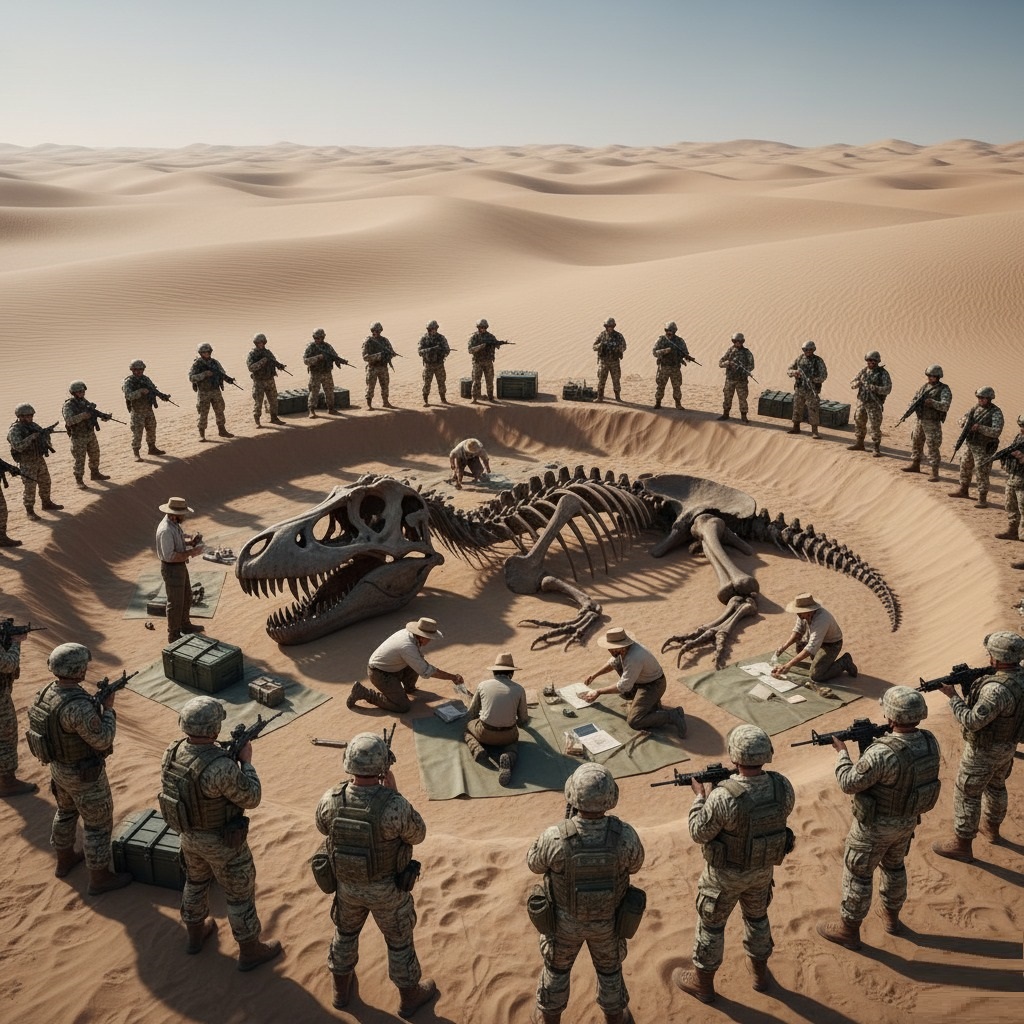Unearthing the Leviathan: A Jurassic Discovery in the Gobi Sands

The year was 2047. Climate change had long reshaped the Earth, intensifying the aridity of already dry regions, and ironically, exposing secrets hidden beneath millennia of sand. Dr. Aris Thorne, a paleontologist whose life had been dedicated to the pursuit of the prehistoric, stared out at the endless ochre waves of the Gobi Desert. For weeks, his team had been meticulously surveying a remote, previously inaccessible section near the Nemegt Basin – a region already legendary for its dinosaur fossil beds.
What began as a routine seismic scan had escalated into a full-scale excavation. The initial readings were anomalous, suggesting an immense, coherent structure beneath the surface. It wasn’t long before the sand began to yield. First, a curved rib, then a vertebra the size of a dinner plate. Within days, the outline became undeniable: the complete skeleton of a theropod of gargantuan proportions, dwarfing even the most famous Tyrannosaurus rex finds.
The discovery sent shockwaves through the scientific community. The sheer completeness and pristine condition of the fossil, estimated to be from the late Cretaceous period, suggested a quick burial, perhaps by a sudden, massive sandstorm that had both entombed and preserved it. The skull alone was a masterpiece of evolution – sharp, serrated teeth still gleaming, ocular orbits hinting at a formidable predator. This was no ordinary dinosaur; this was a “Leviathan,” as the team quickly nicknamed it.
The remote location, coupled with the unprecedented scale of the find, necessitated unprecedented security. Governments and private entities, eager to protect such an invaluable piece of Earth’s history, dispatched a contingent of elite military personnel. Now, a perimeter of armed soldiers stood vigil around the circular excavation pit, their silhouettes stark against the blinding Gobi sun. Their presence was a constant reminder of the discovery’s global significance, ensuring that no unauthorized eyes or hands would disturb the delicate process.
Dr. Thorne, with a brush in hand, gently coaxed sand from a massive pelvic bone. Around him, his international team – a mosaic of geologists, paleontologists, and conservators – worked with synchronized precision. Robotic arms assisted in lifting larger sections, while 3D scanners meticulously mapped every inch of the ancient beast. Each grain of sand removed, each measurement taken, brought them closer to understanding this magnificent creature that once roamed these very lands.
As the sun dipped below the horizon, painting the desert in hues of fiery orange and deep violet, the skeletal form of the Leviathan seemed to glow with an otherworldly light. It was a silent testament to a world long past, a powerful echo from an era when giants walked the Earth. And in the heart of the Gobi, amidst the watchful eyes of soldiers and the dedicated hands of scientists, the story of the Leviathan was slowly, painstakingly, being brought back to life.
